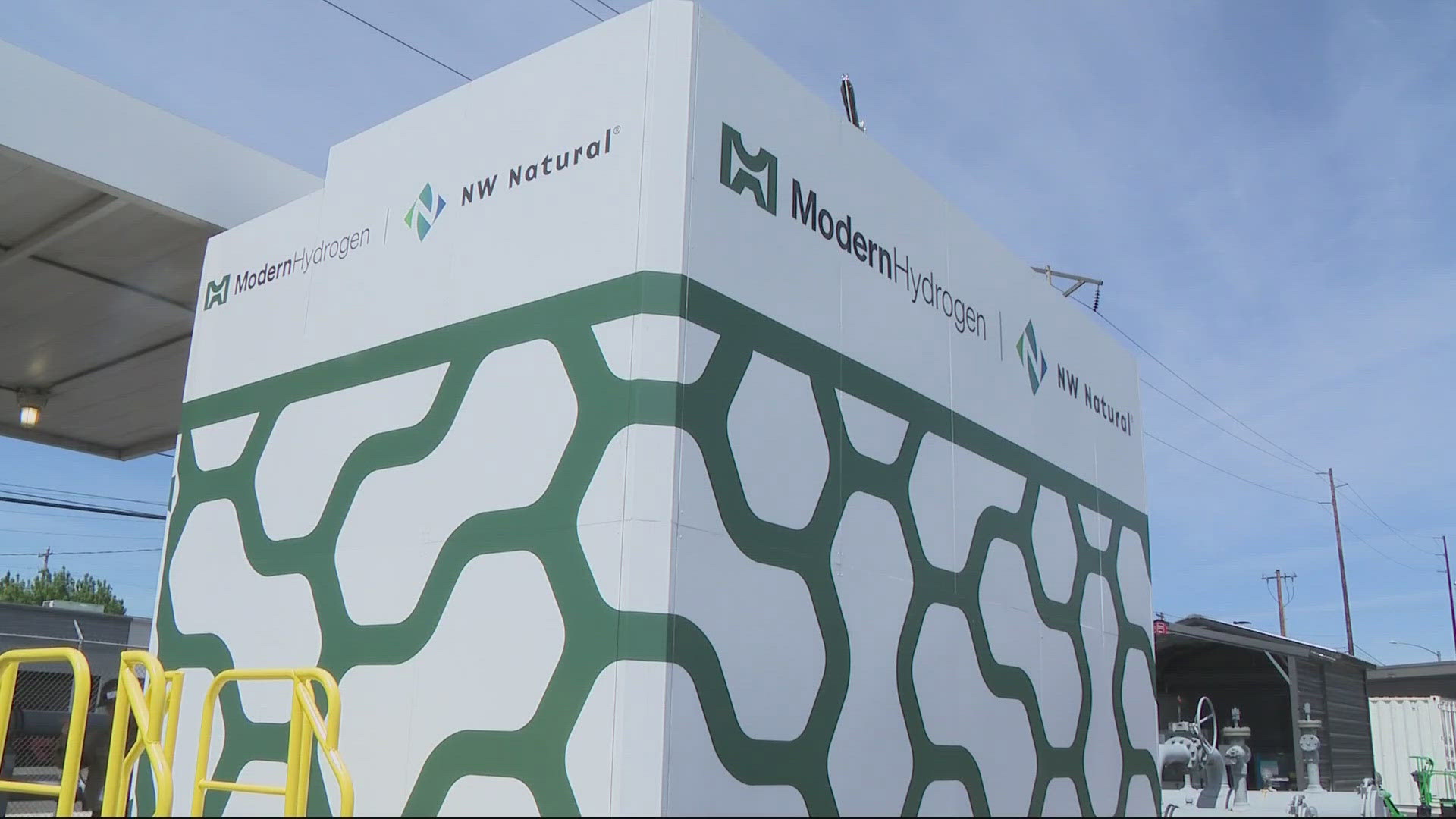PORTLAND, Ore. — Northwest Natural, which delivers natural gas to around two million people across Oregon and Southwest Washington, is taking steps to curb carbon emissions by stripping it out of their gas feed.
READ MORE: Stories from KGW's Good Energy series
They've partnered with Modern Hydrogen, a clean energy company based in Seattle, which has perfected a form of methane pyrolysis that breaks down natural gas into its principle elements of carbon and hydrogen.
The hydrogen then burns cleanly, producing comparable heat to methane and water. The other product, solid carbon black, has many uses: tires, pigments, and in this case, asphalt.
This particular method delivers what's know as turquoise hydrogen, due to it's relatively low emission process. See more about the various forms of hydrogen production here.
In what is believed to be a first among gas utilities in North America, Northwest Natural started a three-year pilot plan to test the technology at their southeast Portland Central Resource Center. For now, the test is only adding a 0.2% hydrogen mixture to the distribution line. But the future could be a 15-20% (or greater) blend.
"So we're excited to see if this technology works, how reliable it is, does it deliver on its efficiency claims?" said Chris Kroeker, business development segment manager at Northwest Natural. "And if it does all that, how do we scale this up as quickly as possible to decarbonize our customers directly?"
The reason for the urgency? We are still heavily dependent on natural gas. There are about three million miles of pipeline in the U.S. delivering 29 trillion cubic feet of natural gas to about 78 million customers every year. Burning methane, the primary gas in that stream emits 1.7 gigatons of the global-warming gas CO2. That's about 35% of the annual U.S. emissions.
"One scenario we're looking at is deploying these units in front of residential areas and making hydrogen scrubbing out the carbon and blending that into the natural gas stream to get upwards of 20% by volume hydrogen delivered to every residential customer," Kroeker said.
What about the dozens of heavy industrial users, whose consumption is orders of magnitude higher than the average household? "I’m gonna put this box at the end of the line, and you, factory operator, are going to have 100% decarbonized operations and you don’t have to change a thing about your business. How does that sound?" said Mothusi Pahl of Modern Hydrogen.
This would be applicable at schools, hospitals and breweries — industries that need lots of heat.
"They already have equipment that can be modified to accept large percentages of hydrogen, and they're used to having retrofits done. So we can decarbonize our largest customers very efficiently, at low cost and large scale," Kroeker said.
Chris McGinness is a meteorologist and reporter for KGW News. Email him here and reach out on social media: Facebook, Instagram and X.
VIDEO PLAYLIST: KGW's Good Energy series

